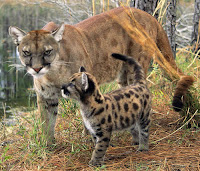 Scientific Name: Balaenoptera
Scientific Name: BalaenopteraRecovery Plan: Sei Whale Recovery Plan by the National Marine Fisheries Service
Picture courtesy of Marine Bio.org http://marinebio.org/species.asp?id=192
Sei Whales, according to the Ecological Conservation Online System, have been listed as endangered on the Endangered Species List since the early 1970s. Their listing date with the ESA is 12/07/1970, while their recovery plan date is 07/27/2012. Sei Whales are rorquals which is a part of the Baleen whale family and includes humpback, blue, Bryde’s, fin, Omura’s and minke whales. Sei Whales are most similarly mistaken for their family members the fin whales, which makes their population count harder to track. Sei Whales can grow up to 40-60 ft long, with sleek slightly deep grey colored bodies that tend to have white marks on them due to being attacked by competitors or run into larger, sharp objects. The female pregnancy tends to last 10.5 to 12 months and they can live to 50-70 years old, resulting in a k-selected lifestyle.

Map provided by NOAA
This is a map of where the Sei Whales like to travel. the switch off with the cliché migration in which they move to lower latitudes during the winter and high latitudes during the summer. They aren't known to particularly stay in the same spot year round but have been known to be spotted more closely around Iceland and Denmark. Prefers to migrate through the world's temperate to subpolar marine waters. Their typical diet consists of zooplankton, copepods, and the occasional squid.
Chart of rules in order to downlist/de-list provided by ECOS
Unfortunately due to the lack of monitoring and knowledge on the Sei Whale, the only productive plan that has been put into action is to make it restrict extensive commercial whaling by the International Whaling Commission (IWC). Although scientists believe that other factors can lead to reduction in the Sei Whale population such as:
1. collissions with vessels
2. entanglement in fishing gear
3. reduced/displaced prey abundance
4. increasing ocean noise which can prohibit the whale from hearing foreign sounds or being heard while calling out for mating/help
The current recovery plan put into place is to create separate Tiers in which:
Tier 1: 10 years of conducting research on the population
size/changes and regulate whaling
Tier 2: Build upon the research of Tier 1, if Tier 1’s
efforts aren’t sufficient
Tier 3: Will be a combination of reviewing Tier 1 and 2’s
results; can be started prior to finalization of both previous tiersWith these Tiers' extensive plans, according to ECOS, the ESA, MMPA (Marine Mammal Protection Act), and the IWC (which monitor the population rates of Sei Whales) hope to downlist the Sei Whale from endangered to threatened and with time de-list it from the ESA listing.















